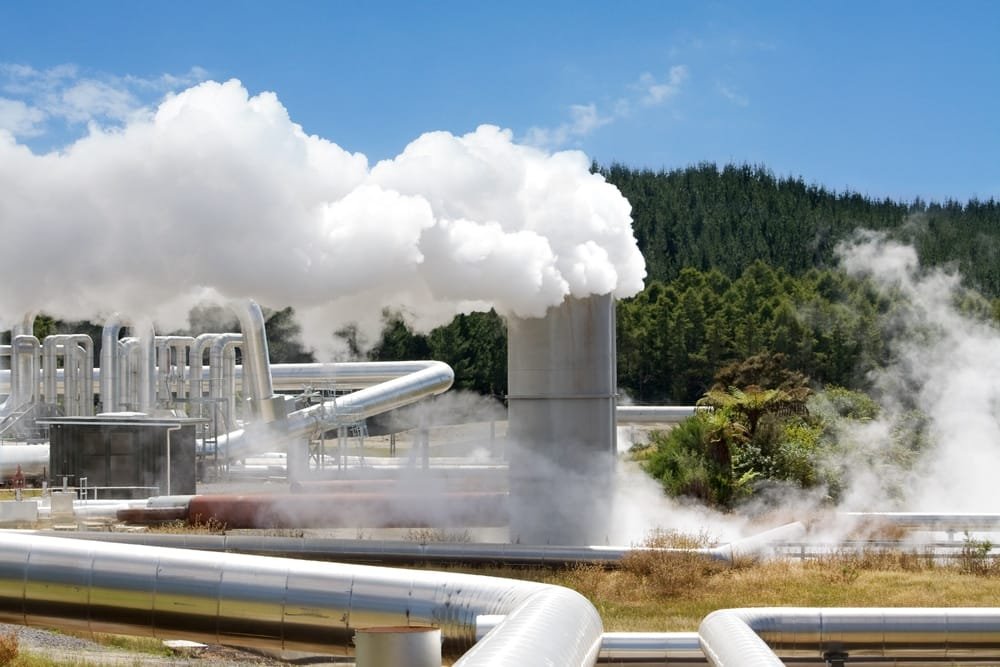A Sustainable Path Through Geothermal Energy
The Philippines, located in the Pacific Ring of Fire, is rich in geothermal resources, making it the world’s third-largest geothermal energy producer. Geothermal energy is not just a source of power; it secures energy supply in ways that are safe and green.
This article will delve into the current state of geothermal energy in the Philippines – from how it’s being harnessed to how it affects the daily lives of Filipinos across the country.
What Is Geothermal Energy?
Geothermal energy, generated from deep Earth heat, is accessed by drilling into the crust to release steam and hot water. According to the U.S. Energy Information Administration, it produces renewable, clean electricity with minimal greenhouse gas (GHG) emissions by running geothermal steam through turbines.
Energy Tracker Asia says geothermal energy represents about 14% of the Philippines’ total electricity generation, or over 1,900 megawatts (MW) of the country’s installed capacity. This is forecast to increase with government and industry investments in the technology.
Key Geothermal Sites in the PH
Multiple geothermal sites contribute to the country’s energy supply. These include Tiwi in Albay, Mak-Ban (Makiling-Banahaw) in Laguna and Batangas, the Bacman (Bacon-Manito) Geothermal Plants in Albay and Sorsogon, Leyte’s Tongonan Geothermal Power Plant, and the Mount Apo Geothermal Power Plant in Mindanao:
- Tiwi Geothermal Field: Tiwi is one of the oldest geothermal power plants in the country and has produced renewables since 1979. Any lingering doubts about the lasting contribution of geothermal energy are dispelled by the fact that it continues to operate.
- Mak-Ban Geothermal Field: Located on the border of Laguna and Batangas, this geothermal power generation produces clean electricity for nearby regions.
- BacMan (Bacon-Manito) Geothermal Plants: Operated by First Gen Corporation, these plants supply the grid and support the Bicol Region.
- Tongonan Geothermal Power Plant: Located in Leyte, this is part of the largest wet steam field in the Philippines, boasting an installed capacity of over 700 megawatts (MW). It supplies power to the Visayas grid, assisting energy security and reliability in the region.
- Mount Apo Geothermal Power Plant: Situated near Mount Apo in Mindanao, this geothermal plant contributes to the Mindanao Grid, serving areas such as Kidapawan and the Davao Region. According to Business World Publishing, the facility has a total capacity of over 108 MW after Energy Development Corporation (EDC) expanded its capacity by 3.6 MW in 2022.
These geothermal sites serve as a source of dependable power for the country, freeing it from imported fuel dependency while increasing energy security. Furthermore, geothermal energy has a low environmental impact, with lower greenhouse gas emissions than fossil fuels. Also, it takes up less land than solar or wind farms, preserving our natural landscapes. Geothermal power also has a long productive lifespan, as demonstrated by facilities constructed in the 1970s and 1980s that are still producing energy today. In contrast, solar PV farms face panel degradation over time, with an average useful life of approximately 20 years.
How Geothermal Energy Impacts Daily Life
Geothermal energy isn’t a concept—it is a reality that powers the grid which in turn sends electricity to residential areas and commercial establishments. This is unlike other renewables such as solar or wind, which are weather-dependent; geothermal energy will deliver a stable, continuous source of electricity. In a country prone to harsh and unpredictable weather conditions, this reliability is crucial. With its use of geothermal power, the grid has a stable, uninterrupted source of energy that remains unaffected by inclement weather, supporting residents and businesses.
Geothermal resource usage also keeps electricity costs more predictable. Renewable sources like geothermal provide protection from the increasing costs of fossil fuels as the price fluctuates in global markets, benefiting households directly. Over a longer period of time, this means that energy will be more budget-friendly.
Job Creation and Economic Growth in Local Communities
Geothermal energy and its growth bring new jobs in construction, engineering, and plant operation, providing stable sources of income as living standards rise. Also, taxes and royalties generated from geothermal plants help fund public services and community projects. This economic stability nurtures a healthy community and fosters thriving local businesses.
Geothermal Energy and Its Future in the PH
The Philippines, ranked among the world’s largest geothermal nations, possesses rich resources that are untapped. New geothermal fields, and the use of advanced technologies, such as Enhanced Geothermal Systems (EGS), can be developed through collaboration between the government, private sector, and research institutions. EGS technology enables extraction from deep geothermal resources that were previously inaccessible, thus broadening site possibilities.
Beyond price predictability, geothermal resource expansion is an opportunity to help protect the environment, drive growth, and ensure energy security. Because the Philippines has started harnessing its geothermal potential, it can be a role model for renewable energy independence and help curb climate change, setting an example for sustainable growth in the Philippines.
Conclusion: A Renewable Legacy
The Philippines’ geothermal resources offer a powerful and sustainable energy solution that benefits the entire nation. By harnessing the Earth’s natural heat, the Philippines can reduce its reliance on fossil fuels, protect the environment, and foster economic stability in local communities.
Geothermal energy is a resource that keeps giving, from powering homes to creating jobs and protecting the planet. This energy source is a beacon of hope for a sustainable and prosperous future. As we continue to tap into the Philippines’ geothermal potential, we move closer to a renewable legacy that will shape the country’s energy landscape for generations to come.

